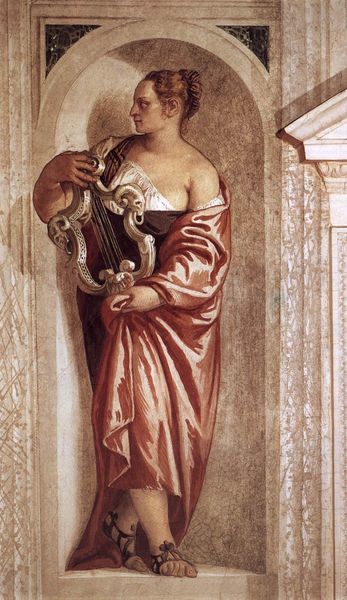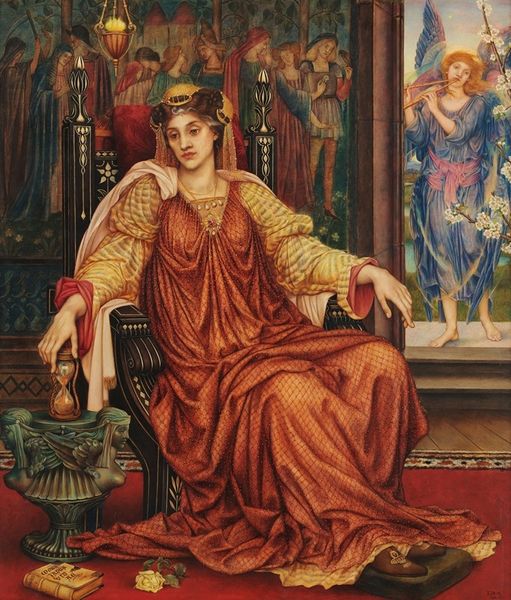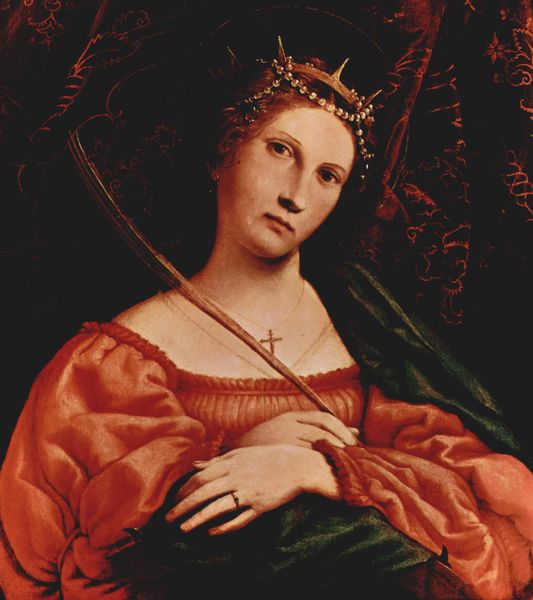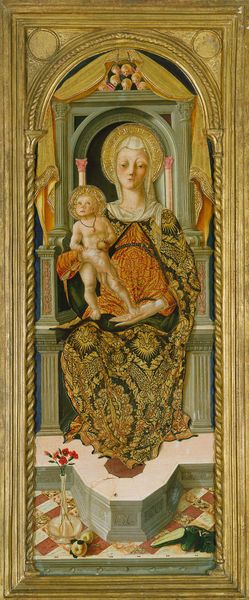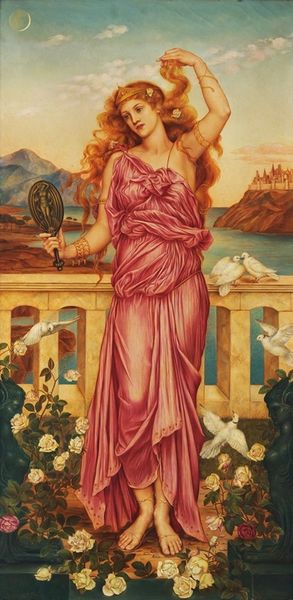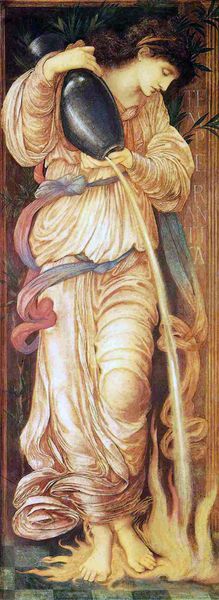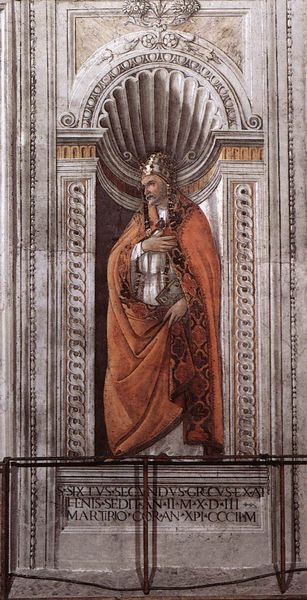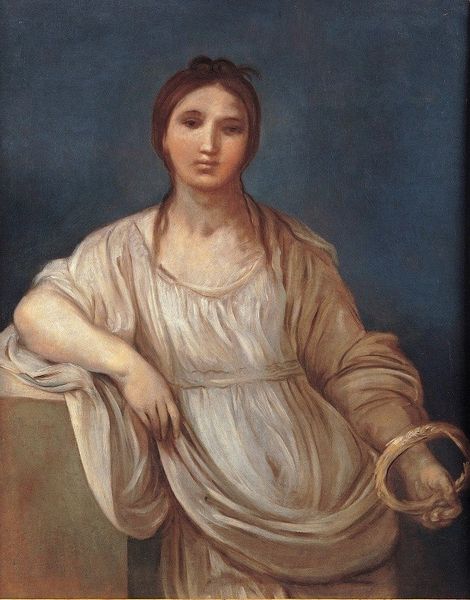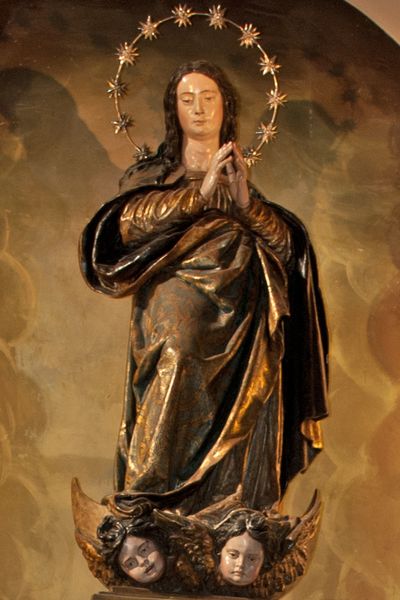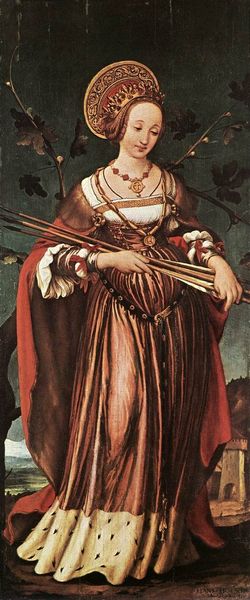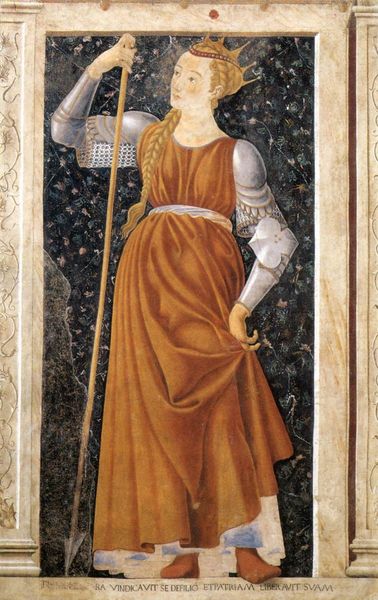
tempera, painting
#
portrait
#
tempera
#
painting
#
sculpture
#
figuration
#
11_renaissance
#
portrait head and shoulder
#
italian-renaissance
Copyright: Public Domain: Artvee
Curator: Allow me to introduce "Fortitude," a tempera on panel work painted around 1470 by Sandro Botticelli. Editor: My immediate reaction is a sense of quiet power. The muted colors, the thoughtful expression—she’s not aggressive, but resolute. There’s an inner strength emanating from this figure. Curator: It's interesting you pick up on the restraint. Painted early in Botticelli’s career, “Fortitude” offers an insight into the evolving representation of women and virtues within the shifting socio-political context of Florence. Commissioned as part of a series of virtues, one has to ask why Fortitude was painted by a male artist. How does that alter our perception of this representation? Editor: The sword and armour definitely speak to traditional symbols of strength, echoing classical imagery. But her relaxed grip and delicate features… There’s an intriguing juxtaposition between martial imagery and her almost melancholy gaze. It reads less as masculine strength, more a reflective perseverance, an enduring quality. Curator: Precisely, and consider her pose. Seated, almost contemplative. Fortitude wasn't merely about brute strength, but a considered approach, particularly in the face of adversity. The virtue that upholds all the others, some would argue. In what ways did women during the Florentine Renaissance embody perseverance in ways that reflect today's political environment, in the era of the Me Too movement? Editor: That links beautifully to the psychological dimension. It speaks of repressed anger, maybe, or a determined spirit forced into a position of passivity. Curator: Absolutely. Even her bare feet disrupt the image. A curious visual choice. Is it suggesting vulnerability, or something more daring? Perhaps highlighting bare feet to highlight differences between depictions of male and female resilience in art. It encourages us to reconsider established interpretations. Editor: The work certainly uses recognisable cultural codes of strength, while subverting traditional heroic male portrayals, leading the viewer to consider the complexities that lie behind the familiar image of this powerful figure. Curator: Indeed, Botticelli provides us with more questions than answers regarding the expression of resilience in the 15th century. It urges a fresh dialogue about its representations across time. Editor: An insightful re-evaluation that moves beyond a surface read of power.
Comments
No comments
Be the first to comment and join the conversation on the ultimate creative platform.
